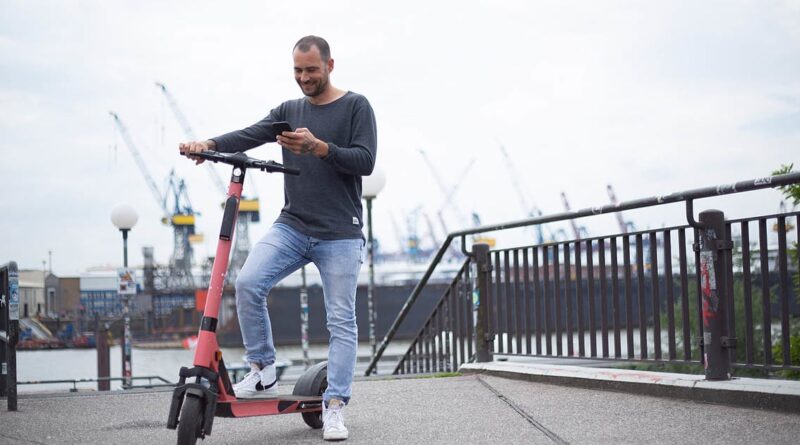IIHS speed limit study reveals e-scooter safety riddle
Stricter speed limits might be pushing electric scooter travelers onto the sidewalks, a new study from the Insurance Institute for Highway Safety suggests.
The nonprofit research organization compared scooter use in Austin, Texas, where the speed limit for scooter travel is 20 mph, and Washington D.C., where it is 10 mph. Where bike lanes are not present, D.C. riders were 44 percent more likely to venture off the streets and onto the sidewalk than in Austin. This was true even when road traffic was heavier in Austin and when pedestrian and cyclist populations were denser in D.C.
Scooters find themselves in the rapidly evolving field of micromobility, where riders are negotiating modes of travel that are slower than traditional vehicles but faster than pedestrian foot traffic. The difference in speed in both situations presents problems, Jessica Cicchino, author of the IIHS study, told Automotive News. A separate IIHS study in D.C. found that while scooter injuries are more severe on the roads, injuries are most common on the sidewalks.
Cities and scooter companies find themselves negotiating this “trade-off,” with many of the safety implications of new regulations still unclear, Cicchino said. Car-centric urban planning has posed a challenge across the micromobility sector and experts believe expanded scooter and e-bike use will require rethinking transportation and infrastructure.
Creating opportunities for scooter riders to travel alongside those moving at a similar speed, such as cyclists, is another potential strategy to limit unsafe interactions, Cicchino said. IIHS’ speed limit study found that 80 percent of e-scooter riders in both cities chose to use a bike lane when it was available.
“The more vulnerable road users that you have that might interact with cars, the more important it is to design roads in ways that make it harder to speed, to have more traffic calming or have speed limits that are appropriate for everybody who’s using the road,” Cicchino said.
The e-scooter sector has been hit hard in recent years by safety concerns, such as brake failures and collisions. Battery fires in particular have increased in frequency and danger, prompting legislation such as the Setting Consumer Standards for Lithium-Ion Batteries Act, which would expand safety standards.
The IIHS study found that while speed limits drove e-scooter riders onto sidewalks, they were somewhat effective at limiting the speeds on these pedestrian paths. Twice the number of riders in Austin were recorded traveling at or over 10 mph on sidewalks than in D.C. This was compared with sidewalk scooter bans, which the study noted have been found to be only marginally effective.
Safety concerns have prompted not only cities but companies themselves to act. Bird has rolled out precision-parking and component-checking hardware, while Bird, Lime, Spin and Superpedestrian all recommend a 15 mph speed limit for e-scooters be enacted by their partnering cities.
Geofencing is another strategy companies are employing, a technology that uses GPS to limit where e-scooters can operate and how fast, Cicchino said. An evolving branch of this strategy, noted by the IIHS study, hopes to detect sidewalk riding and automatically decrease speeds, though these methods are still in development.
Cicchino recognizes potential in this technology and concludes in the study that it “could make speed restrictions an unqualified win for safety, rather than a trade-off.”
Source : Autonews.com




